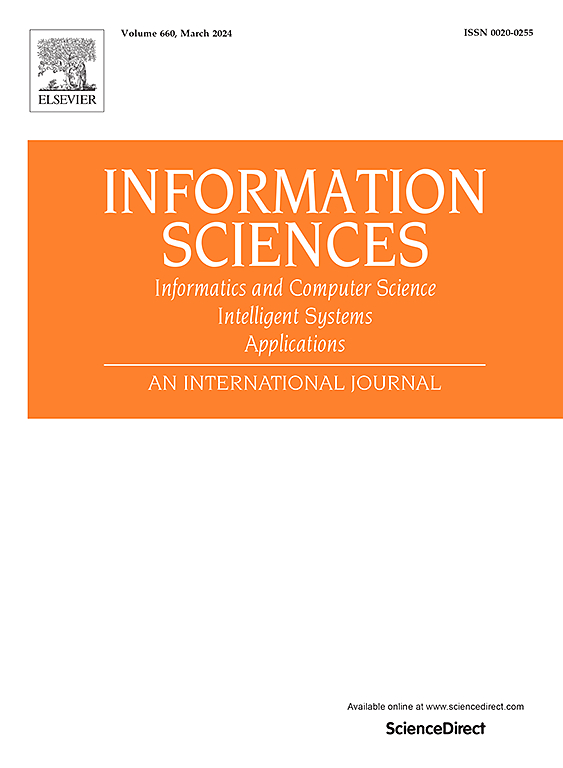ECG-STAR: Spatio-temporal attention residual networks for multi-label ECG abnormality classification
IF 8.1
1区 计算机科学
0 COMPUTER SCIENCE, INFORMATION SYSTEMS
引用次数: 0
Abstract
Accurate and timely diagnosis of cardiovascular diseases (CVDs) through automated electrocardiogram (ECG) interpretation is crucial for facilitating early clinical interventions, reducing mortality rates, and improving post-treatment patient outcomes. This paper introduces ECG-STAR (Spatio-Temporal Attention Residual) Net, a novel deep-learning model designed for multi-label classification of various ECG abnormalities, including arrhythmias and other cardiac conditions. ECG-STAR Net integrates linear layers, long short-term memory (LSTM) networks, spatial-temporal convolutions, and efficient channel attention mechanisms, thereby effectively capturing complex patterns and dependencies in ECG signals. Evaluations on three benchmark ECG datasets, PTB-XL, CPSC 2018, and G12EC, demonstrate the proposed model's high performance, achieving AUC scores of 0.9345, 0.9692, and 0.9117, respectively. Furthermore, ECG-STAR Net achieves notable F1 scores of 0.7556, 0.817, and 0.4429, coupled with low Hamming-loss values of 0.1049, 0.035, and 0.0517 across these datasets. A comprehensive ablation study further underscores the contributions of individual model components, providing additional insights into its architecture and effectiveness. These results highlight the ECG-STAR Net's potential for advancing automated ECG diagnosis and enhancing clinical decision-making.
ECG- star:用于多标签ECG异常分类的时空注意残差网络
通过自动心电图(ECG)解释准确及时地诊断心血管疾病(cvd)对于促进早期临床干预、降低死亡率和改善治疗后患者预后至关重要。本文介绍了ECG- star(时空注意残差)网络,这是一种新的深度学习模型,旨在对各种ECG异常进行多标签分类,包括心律失常和其他心脏疾病。eeg - star网络集成了线性层、长短期记忆(LSTM)网络、时空卷积和有效的通道注意机制,从而有效地捕获心电信号中的复杂模式和依赖关系。在pdb - xl、CPSC 2018和G12EC三个基准心电数据集上的评估表明,该模型的高性能,AUC得分分别为0.9345、0.9692和0.9117。此外,在这些数据集上,eeg - star Net的F1得分分别为0.7556、0.817和0.4429,汉明损失值也很低,分别为0.1049、0.035和0.0517。全面的消融研究进一步强调了单个模型组件的贡献,提供了对其体系结构和有效性的额外见解。这些结果突出了ECG- star网络在推进自动心电图诊断和加强临床决策方面的潜力。
本文章由计算机程序翻译,如有差异,请以英文原文为准。
求助全文
约1分钟内获得全文
求助全文
来源期刊

Information Sciences
工程技术-计算机:信息系统
CiteScore
14.00
自引率
17.30%
发文量
1322
审稿时长
10.4 months
期刊介绍:
Informatics and Computer Science Intelligent Systems Applications is an esteemed international journal that focuses on publishing original and creative research findings in the field of information sciences. We also feature a limited number of timely tutorial and surveying contributions.
Our journal aims to cater to a diverse audience, including researchers, developers, managers, strategic planners, graduate students, and anyone interested in staying up-to-date with cutting-edge research in information science, knowledge engineering, and intelligent systems. While readers are expected to share a common interest in information science, they come from varying backgrounds such as engineering, mathematics, statistics, physics, computer science, cell biology, molecular biology, management science, cognitive science, neurobiology, behavioral sciences, and biochemistry.
 求助内容:
求助内容: 应助结果提醒方式:
应助结果提醒方式:


